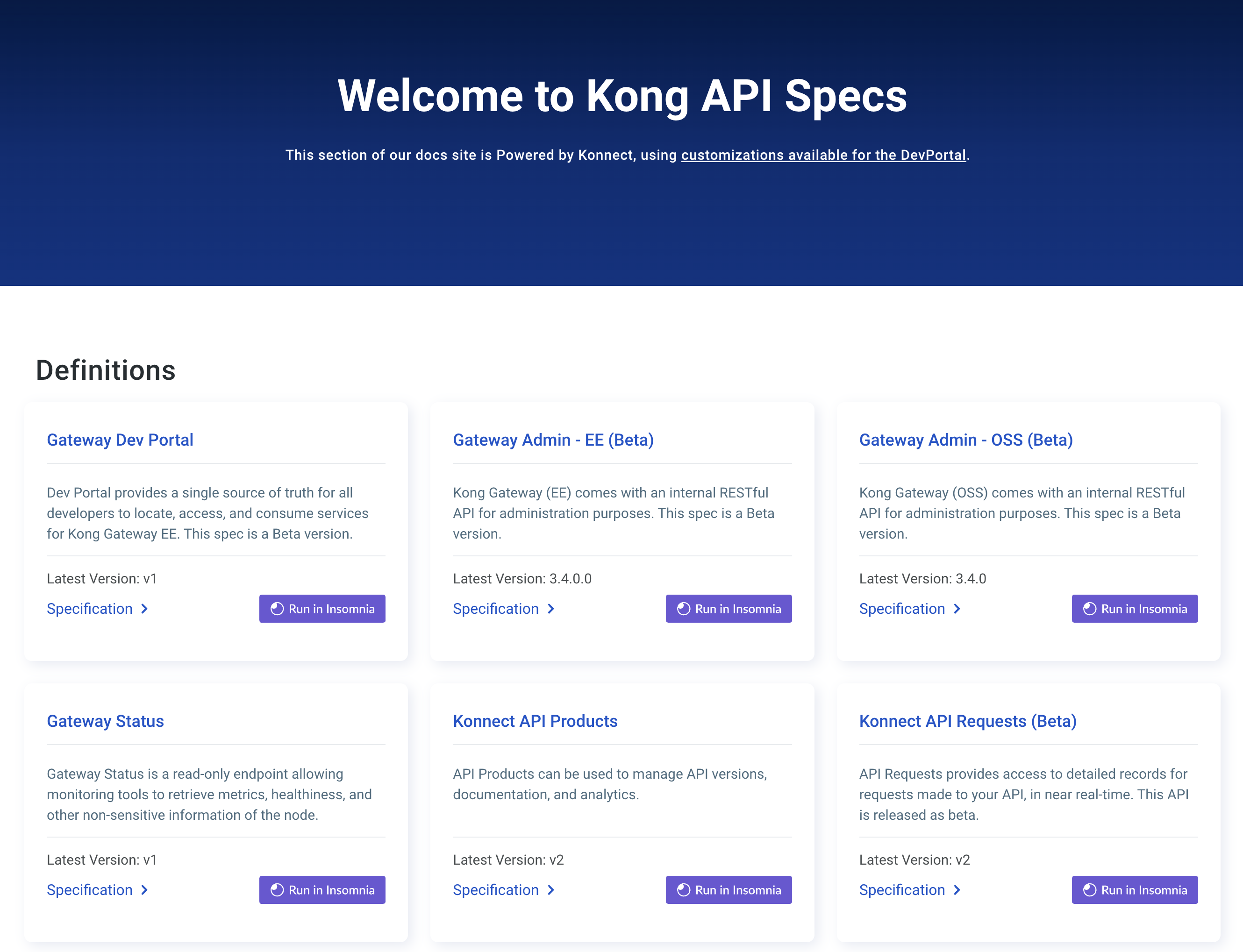このページは、まだ日本語ではご利用いただけません。翻訳中です。
Horizontally autoscale workloads using Datadog
Kong Gateway Operator can be integrated with Datadog Metrics in order to use Kong Gateway latency metrics to autoscale workloads based on their metrics.
Install Datadog in your Kubernetes cluster
Datadog API and application keys
To install Datadog agents in your cluster you will need a Datadog API key and an application key. Please refer to this Datadog manual page to obtain those.
Installing
To install Datadog in your cluster, you can follow this guide
or use the following values.yaml:
datadog:
kubelet:
tlsVerify: false
clusterAgent:
enabled: true
# Enable the metricsProvider to be able to scale based on metrics in Datadog
metricsProvider:
# Set this to true to enable Metrics Provider
enabled: true
# Enable usage of DatadogMetric CRD to autoscale on arbitrary Datadog queries
useDatadogMetrics: true
prometheusScrape:
enabled: true
serviceEndpoints: true
agents:
containers:
agent:
env:
- name: DD_HOSTNAME
valueFrom:
fieldRef:
fieldPath: spec.nodeName
to install Datadog’s helm chart:
helm repo add datadog https://helm.datadoghq.com
helm repo update
helm install -n datadog datadog --set datadog.apiKey=${DD_APIKEY} --set datadog.AppKey=${DD_APPKEY} datadog/datadog
Send traffic
To trigger autoscaling, run the following command in a new terminal window. This will cause the underlying deployment to sleep for 100ms on each request and thus increase the average response time to that value.
while curl -k "http://$(kubectl get gateway kong -o custom-columns='name:.status.addresses[0].value' --no-headers -n default)/echo/shell?cmd=sleep%200.1" ; do sleep 1; done
Keep this running while we move on to next steps.
Annotate Kong Gateway Operator with Datadog checks config
Note: Kong Gateway Operator uses kube-rbac-proxy to secure its endpoints behind an RBAC proxy. This is why we scrape
kube-rbac-proxyand not themanagercontainer.
Add the following annotation on Kong Gateway Operator’s Pod to tell Datadog how to scrape Kong Gateway Operator’s metrics:
ad.datadoghq.com/kube-rbac-proxy.checks: |
{
"openmetrics": {
"instances": [
{
"bearer_token_auth": true,
"bearer_token_path": "/var/run/secrets/kubernetes.io/serviceaccount/token",
"tls_verify": false,
"tls_ignore_warning": true,
"prometheus_url": "https://%%host%%:8443/metrics",
"namespace": "autoscaling",
"metrics": [
"kong_upstream_latency_ms_bucket",
"kong_upstream_latency_ms_sum",
"kong_upstream_latency_ms_count",
],
"send_histograms_buckets": true,
"send_distribution_buckets": true
}
]
}
}
After applying the above you should see avg:autoscaling.kong_upstream_latency_ms{service:echo} metrics in your Datadog Metrics explorer.
Expose Datadog metrics to Kubernetes
To use an external metric in HorizontalPodAutoscaler, we need to configure the Datadog agent to expose it.
There are several ways to achieve this but we’ll use a Kubernetes native way and
use the DatadogMetric CRD:
echo '
apiVersion: datadoghq.com/v1alpha1
kind: DatadogMetric
metadata:
name: echo-kong-upstream-latency-ms-avg
namespace: default
spec:
query: autoscaling.kong_upstream_latency_ms{service:echo} ' | kubectl apply -f -
You can check the status of DatadogMetric with:
kubectl get -n default datadogmetric echo-kong-upstream-latency-ms-avg -w
Which should look like this:
NAME ACTIVE VALID VALUE REFERENCES UPDATE TIME
echo-kong-upstream-latency-ms-avg True True 104.46194839477539 38s
You should be able to get the metric via Kubernetes External Metrics API within 30 seconds:
kubectl get --raw "/apis/external.metrics.k8s.io/v1beta1/namespaces/default/datadogmetric@default:echo-kong-upstream-latency-ms-avg" | jq
{
"kind": "ExternalMetricValueList",
"apiVersion": "external.metrics.k8s.io/v1beta1",
"metadata": {},
"items": [
{
"metricName": "datadogmetric@default:echo-kong-upstream-latency-ms-avg",
"metricLabels": null,
"timestamp": "2024-03-08T18:03:02Z",
"value": "104233138021n"
}
]
}
Note:
104233138021nis a Kubernetes way of expressing numbers as integers. Sincevaluehere represents latency in milliseconds, it is approximately equivalent to 104.23ms.
Use DatadogMetric in HorizontalPodAutoscaler
When we have the metric already available in Kubernetes External API we can use it in HPA like so:
The echo-kong-upstream-latency-ms-avg DatadogMetric from default namespace can be used by the Kubernetes HorizontalPodAutoscaler to autoscale our workload: specifically the echo Deployment.
The following manifest will scale the underlying echo Deployment between 1 and 10 replicas, trying to keep the average latency across last 30s at 40ms.
echo '
apiVersion: autoscaling/v2
kind: HorizontalPodAutoscaler
metadata:
name: echo
namespace: default
spec:
scaleTargetRef:
apiVersion: apps/v1
kind: Deployment
name: echo
minReplicas: 1
maxReplicas: 10
behavior:
scaleDown:
stabilizationWindowSeconds: 1
policies:
- type: Percent
value: 100
periodSeconds: 10
scaleUp:
stabilizationWindowSeconds: 1
policies:
- type: Percent
value: 100
periodSeconds: 2
- type: Pods
value: 4
periodSeconds: 2
selectPolicy: Max
metrics:
- type: External
external:
metric:
name: datadogmetric@default:echo-kong-upstream-latency-ms-avg
target:
type: Value
value: 40 ' | kubectl apply -f -
When everything is configured correctly, DatadogMetric’s status will update and it will now have a reference to the HorizontalPodAutoscaler:
Get the DatadogMetric using kubectl:
kubectl get -n default datadogmetric echo-kong-upstream-latency-ms-avg -w
You will see the HPA reference in the output:
NAME ACTIVE VALID VALUE REFERENCES UPDATE TIME
echo-kong-upstream-latency-ms-avg True True 104.46194839477539 hpa:default/echo 38s
If everything went well we should see the SuccessfulRescale events:
12m Normal SuccessfulRescale horizontalpodautoscaler/echo New size: 2; reason: Service metric kong_upstream_latency_ms_30s_average above target
12m Normal SuccessfulRescale horizontalpodautoscaler/echo New size: 4; reason: Service metric kong_upstream_latency_ms_30s_average above target
12m Normal SuccessfulRescale horizontalpodautoscaler/echo New size: 8; reason: Service metric kong_upstream_latency_ms_30s_average above target
12m Normal SuccessfulRescale horizontalpodautoscaler/echo New size: 10; reason: Service metric kong_upstream_latency_ms_30s_average above target
# Then when latency drops
4s Normal SuccessfulRescale horizontalpodautoscaler/echo New size: 1; reason: All metrics below target












